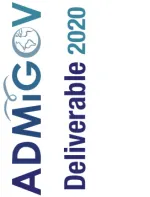Circular and temporary migration in Poland during COVID-19

ADMIGOV Deliverable 3.2 (2020)
Poland for many years has been a country of emigration. This phenomenon started to change in the years of 2008 and 2009, when the inflow of migrants from the neighbouring countries increased dramatically. From that point on, Poland started its transformation from an emigration to an immigration country.
The aim of this report is three-fold, it initially aims to analyse the development of the migration regulations in Poland during the past last ten years and their impact on the inflow of seasonal and circular migrants. Secondly, it endeavours to scrutinize the unprecedented phenomenon of the coronavirus and how the border closures, the restrictions of movement and the fears of the spread of the virus, could impact the agricultural sector in the country. Poland has not developed yet a complex and long-term migration policy about seasonal workers. Labour market regulations have been implemented as a result of increasing demand for workers, primarily in agriculture, and in later years in other sectors as well. Agriculture was decided to be at the centre of this report due to the fact that across Europe, the sector was vastly hit with concerns voiced about possible food shortages inside the continent. Migrants play a pivotal role as a work force and without them agriculture in Europe can severely struggle. Finally, based on our fieldwork we aim to suggest several policy recommendations tailored to the current needs of the Polish market. Within these recommendations existing good practices in the system are particularly underlined and suggested to be maintained as they can feature as an example for safer and ordinary migration.